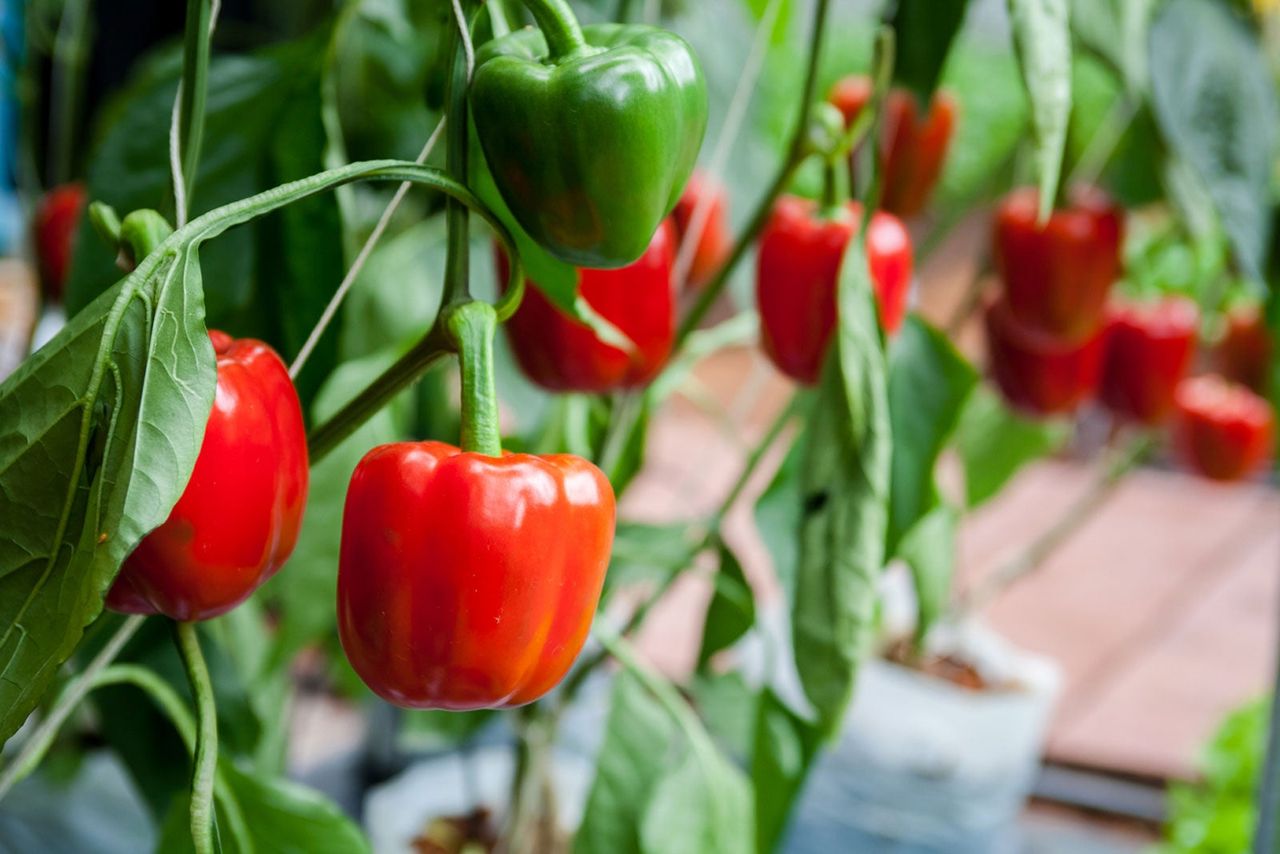Bell Pepper Info And Planting – How To Start Growing Peppers


Like most gardeners, when you’re planning your vegetable garden, you’ll probably want to include bell peppers. Peppers are excellent in all sorts of dishes, raw and cooked. They can be frozen at season’s end and enjoyed in dishes throughout the winter.
Brush up on some bell pepper info to learn all about growing these delicious and nutritious vegetables. A little knowledge about pepper plant care will go a long way.
What Growing Peppers Need to Get Started
Growing bell peppers isn’t difficult, but temperature is an important factor. While they’re fairly easy to grow, pepper plant care in these early stages is critical.
Always start pepper plant seedlings indoors. The seeds need the warmth of your house to germinate. Fill a seed tray with seed starting soil or well-draining potting soil, placing one to three seeds in each container. Place the tray in a warm location or use a warming mat to keep them between 70 to 90 degrees F. (21-32 C.) – the warmer the better.
If you find it helpful, you can cover the tray with plastic wrap. Water droplets will form on the underside of the plastic to let you know the baby seeds have enough water. If the drops stop forming, it’s time to give them a drink. You should begin to see signs of plants popping up within a couple weeks.
When your little plants get to be a few inches tall, gently pot them separately in small pots. As the weather begins to warm, you can get the small plants used to the outdoors by hardening the seedlings off - putting them out during the day for a bit. This, along with a little fertilizer now and then, will strengthen them in preparation for the garden.
When the weather has warmed up and your young plants have grown to about 8 inches tall (20 cm.), they can be transferred to the garden. They’ll thrive in soil with a pH of 6.5 or 7.
Gardening tips, videos, info and more delivered right to your inbox!
Sign up for the Gardening Know How newsletter today and receive a free copy of our e-book "How to Grow Delicious Tomatoes".
How Do I Grow Peppers in the Garden?
Since bell peppers thrive in the warm seasons, wait for the nighttime temperatures in your region rise to 50 degrees F. (10 C.) or higher before transplanting them to the garden. Before you plant peppers outdoors, it’s important to be absolutely certain that the chance of frost is long gone. A frost will either kill the plants altogether or inhibit pepper growth, leaving you with bare plants.
Pepper plants should be placed in the soil 18 to 24 inches (46-60 cm.) apart. They’ll enjoy being planted near your tomato plants. The soil should be well drained and amended before you put them into the ground. Healthy pepper plants should produce peppers throughout late summer.
Harvesting Peppers
It’s easy to determine when your peppers are ready to harvest. Begin to pick the peppers once they are 3 to 4 inches (7.6 to 10 cm.) long and the fruit is firm and green. If they feel somewhat thin, the peppers aren’t ripe. If they feel soggy, it means they’ve been left on the plant too long. After you harvest the first crop of peppers, feel free to fertilize the plants to give them the energy they need to form another crop.
Some gardeners prefer red, yellow or orange bell peppers. These varieties just need to stay on the vine longer to mature. They’ll start out green, but you’ll notice they have a thinner feel. Once they begin to take on color, the peppers will thicken and become ripe enough to harvest. Enjoy!

Caroline Bloomfield is Manager of Marketing Communications at Gardening Know How since 2019. A northwest native, she has resided and gardened in multiple zones in the U.S. and is currently at home in Bandon, Oregon. Writing and editing for various publications since 1998, her BA in American Studies from Southern Maine University includes an emphasis in English. She was raised in California by avid gardeners and continues to enjoy the natural world with an appreciation for the concepts of sustainability and organic care for the planet.
-
 Orchid Leaves Wrinkled? 5 Common Causes & How To Restore Their Vitality
Orchid Leaves Wrinkled? 5 Common Causes & How To Restore Their VitalityBy Tonya Barnett
-
 5 Ways To Protect Your Garden Against Flooding This Spring, According To An Expert
5 Ways To Protect Your Garden Against Flooding This Spring, According To An ExpertClimate-resilient gardening expert Kim Stoddart explains how to get your garden ready for April showers and help reduce the risk of flooding this spring.
By Kim Stoddart